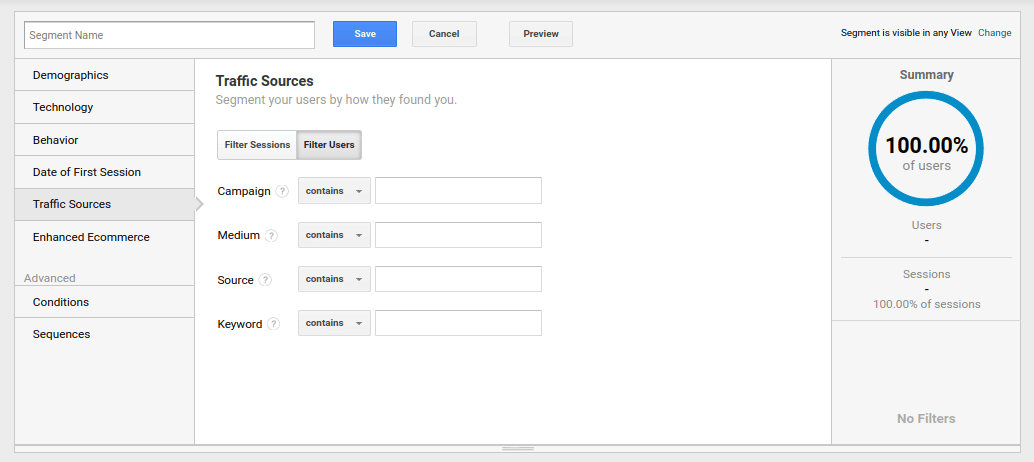Utilizing Remarketing in Google Analytics: A Comprehensive Guide
Taking advantage of remarketing in Google Analytics provides businesses a critical side in getting to out to possible clients. The capacity to target individuals that have actually currently communicated with your internet site presents a special opportunity for tailored advertising initiatives. By recognizing how to craft target market listings and deploy them successfully, organizations can substantially enhance their conversion rates. However, the details of setting up and enhancing remarketing projects require a thorough understanding of target market division and efficiency analysis. This guide will certainly clarify the necessary steps associated with taking advantage of the full potential of remarketing in Google Analytics, causing enhanced marketing results.
Comprehending Remarketing in Google Analytics
Remarketing in Google Analytics permits services to tactically target users that have actually formerly communicated with their site or mobile app. By leveraging information from Google Analytics, services can produce tailored remarketing lists based on individual habits, such as web pages checked out, actions taken, or details objectives achieved. This effective tool enables companies to re-engage with individuals who have shown rate of interest in their solutions or products, inevitably increasing the possibility of conversion.
Comprehending the different kinds of remarketing techniques is crucial for an effective project - What Is “Remarketing” In Google Analytics?. Google Analytics provides various alternatives, consisting of conventional remarketing, dynamic remarketing, and remarketing listings for search advertisements (RLSA) Each type serves a special purpose and can be customized to fulfill specific marketing objectives
Additionally, analyzing the performance of remarketing campaigns is crucial for maximizing outcomes. Google Analytics supplies valuable insights right into the performance of various remarketing approaches, allowing services to make data-driven choices and fine-tune their targeting strategy. By continually readjusting and keeping track of remarketing efforts based on analytics information, businesses can maximize ROI and drive success in their advertising efforts.
Establishing Up Remarketing Projects

After establishing up target market lists, the following action is to link Google Analytics with Google Advertisements. By linking these two systems, organizations can flawlessly move target market listings from Google Analytics to Google Advertisements for remarketing objectives. This integration enables more exact targeting and better campaign performance.
As soon as the accounts are click here for more info connected, companies can develop remarketing projects in Google Ads utilizing the audience provides previously defined in Google Analytics. These campaigns can be customized with particular advertisement creatives, messaging, and bidding strategies to successfully re-engage with past visitors and drive conversions. By following these steps, businesses can utilize the power of remarketing to boost their advertising efforts and boost ROI.
Using Target Market Division Approaches

Predefined segments in Google Analytics permit you to swiftly examine typical target market categories fresh individuals, returning users, or customers who finished a specific objective on your site. Customized segments, on the various other hand, enable you to develop special sectors based on specific standards that are necessary to your organization purposes. Dynamic remarketing listings instantly change based upon user habits, showing individualized ads to individuals that have actually engaged with your website specifically ways.
Studying Remarketing Efficiency Metrics
Upon evaluating the effectiveness of remarketing campaigns in Google Analytics, the analysis of vital performance metrics supplies beneficial insights right into target market engagement and conversion rates. By delving into metrics such as click-through prices (CTR), conversion rates, price per procurement (CPA), and return on advertisement invest (ROAS), online marketers can evaluate the success of their remarketing initiatives. Examining these metrics enables marketing professionals to enhance campaigns, fine-tune target market targeting, and designate budget plans efficiently to improve total remarketing efficiency.
Optimizing Remarketing Techniques
When refining remarketing approaches in Google Analytics, concentrating on target market division is vital for attaining project success. By separating your target market right into specific sectors based upon their actions, demographics, or interests, you can customize your ads better per team. This targeted approach raises the probability of engaging individuals who have actually currently shown interest in your service or products, bring about higher conversion rates.
One more important aspect of optimizing article source remarketing strategies is continuously screening and refining your campaigns (What Is “Remarketing” In Google Analytics?). A/B screening various ad creatives, messaging, or offers can assist you identify what resonates ideal with your audience and drives one of the most conversions. By examining the performance of these examinations in Google Analytics, you can make data-driven decisions to maximize your remarketing initiatives even more
In addition, leveraging vibrant remarketing can significantly improve your campaign results. This attribute enables you to show individualized advertisements to customers based on their past communications with your web site, showcasing product this page and services they have actually previously checked out. By providing customized material to customers based on their habits and interests, dynamic remarketing can aid enhance involvement and drive conversions.
Final Thought
To conclude, harnessing remarketing in Google Analytics is a critical method to target users who have actually previously engaged with a website. By producing tailored target market checklists and utilizing audience segmentation strategies, companies can optimize remarketing advocate boosted conversion rates. Assessing performance metrics and constantly enhancing techniques are critical for maximizing the efficiency of remarketing initiatives.
Google Analytics uses different alternatives, consisting of standard remarketing, vibrant remarketing, and remarketing lists for search ads (RLSA)After setting up target market checklists, the next step is to connect Google Analytics with Google Ads. By connecting these two systems, organizations can perfectly move target market checklists from Google Analytics to Google Advertisements for remarketing objectives.When the accounts are linked, businesses can produce remarketing campaigns in Google Ads making use of the audience lists formerly specified in Google Analytics.When refining remarketing approaches in Google Analytics, focusing on target market segmentation is paramount for attaining project success.